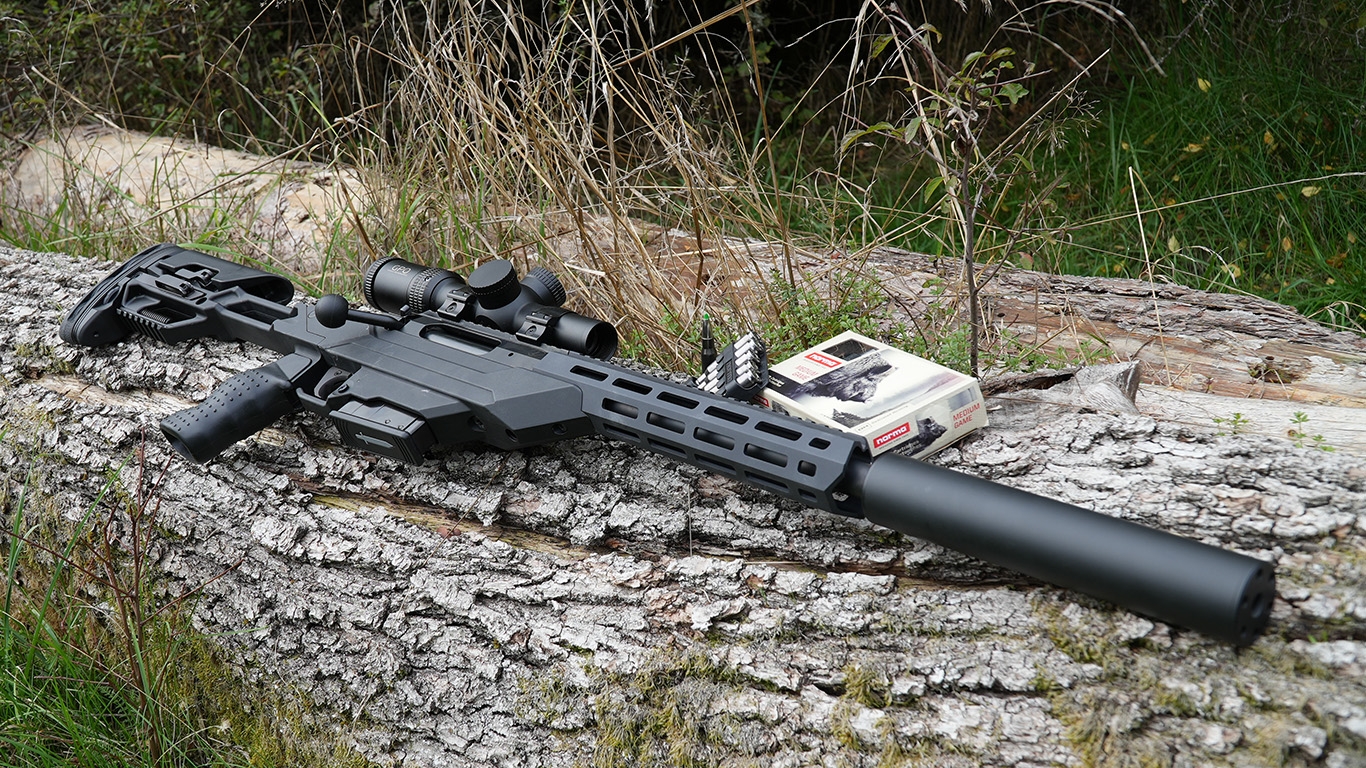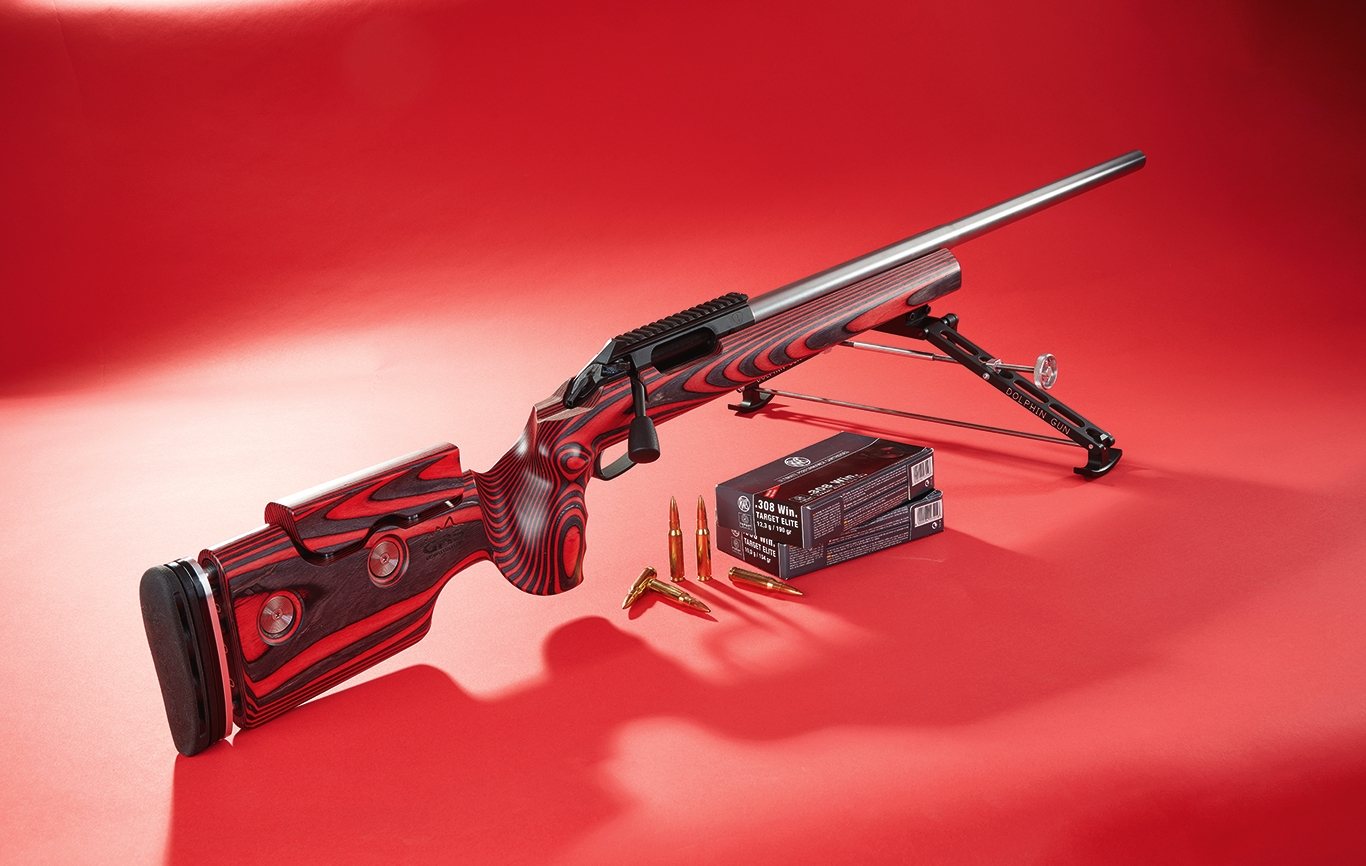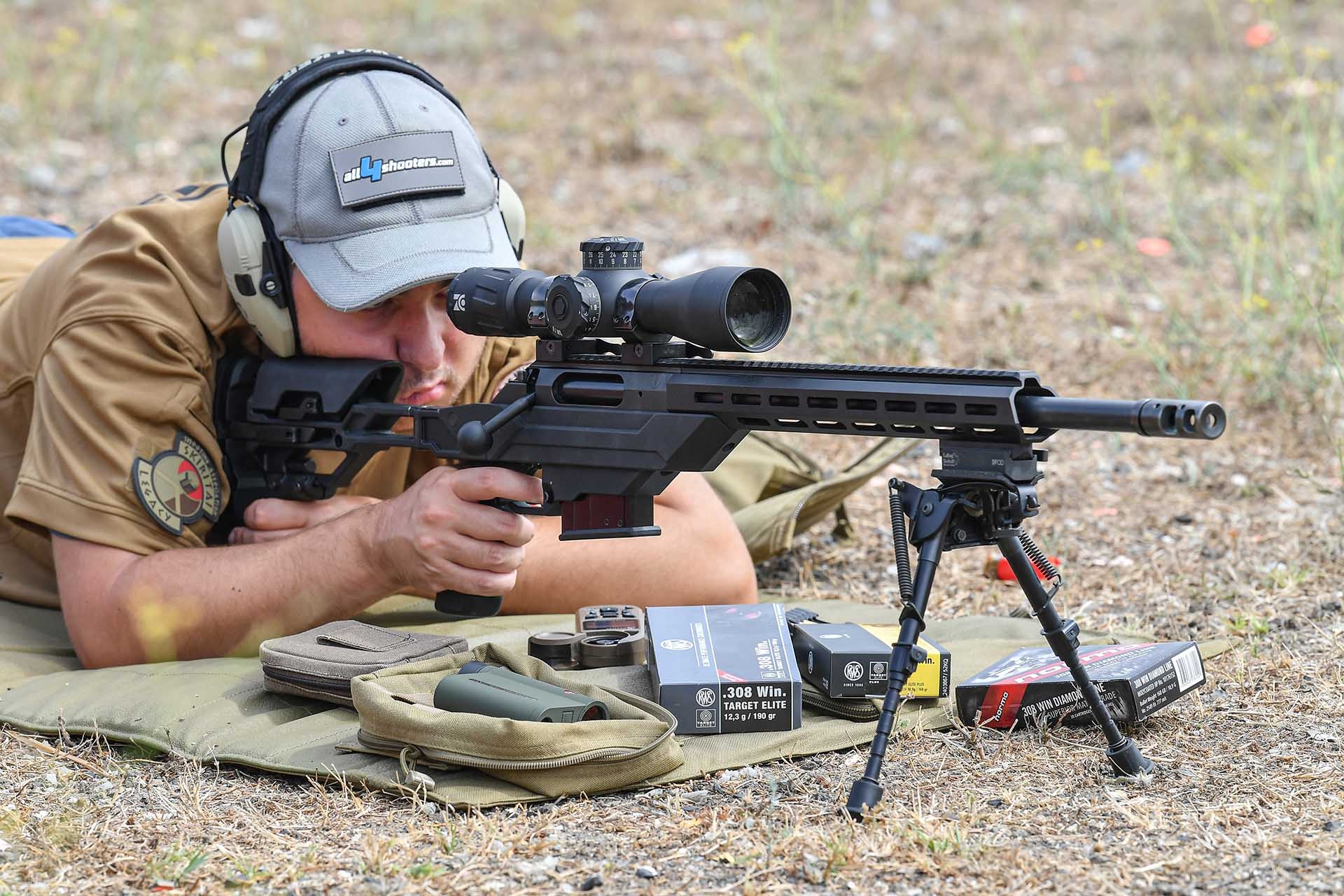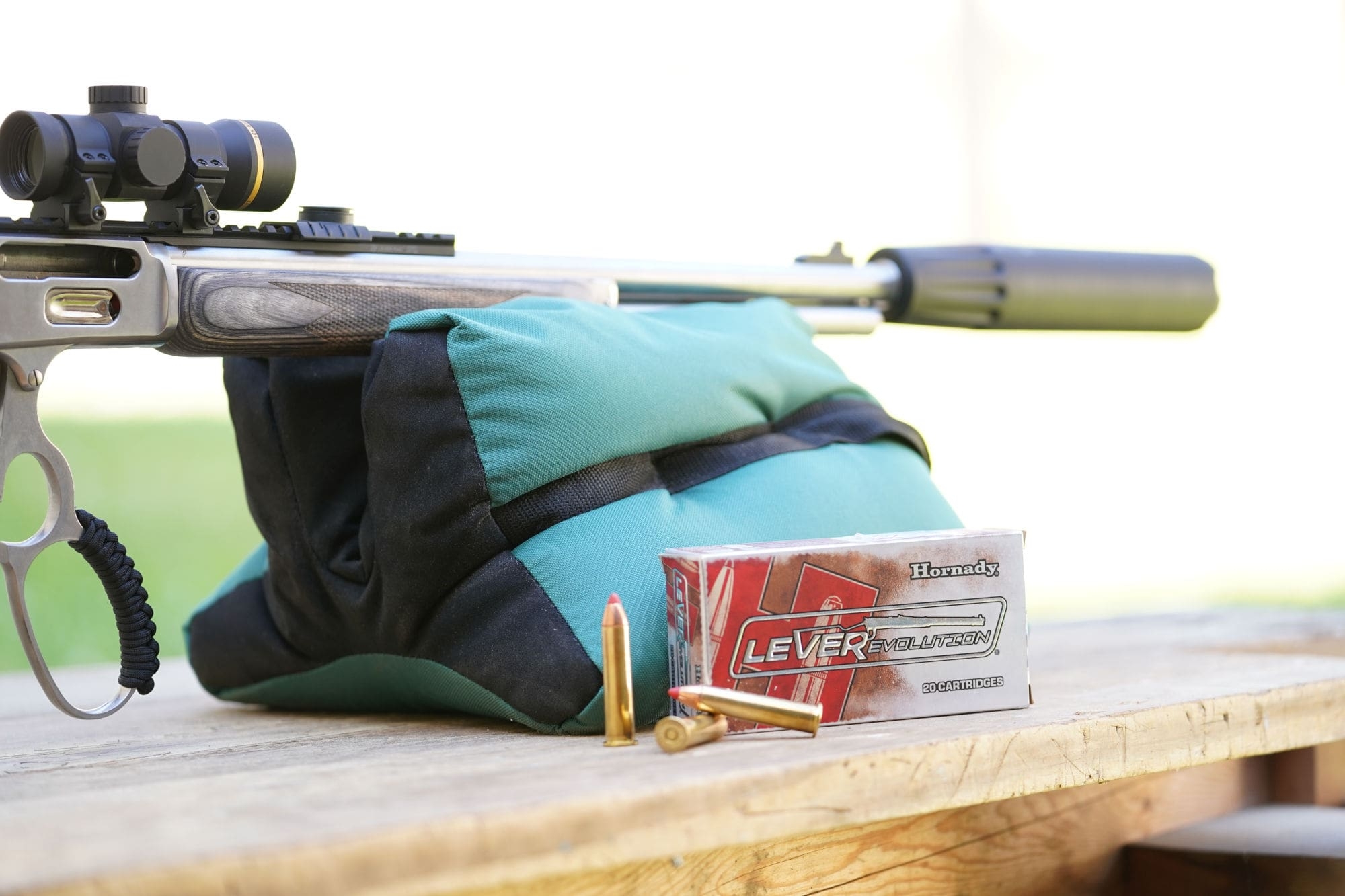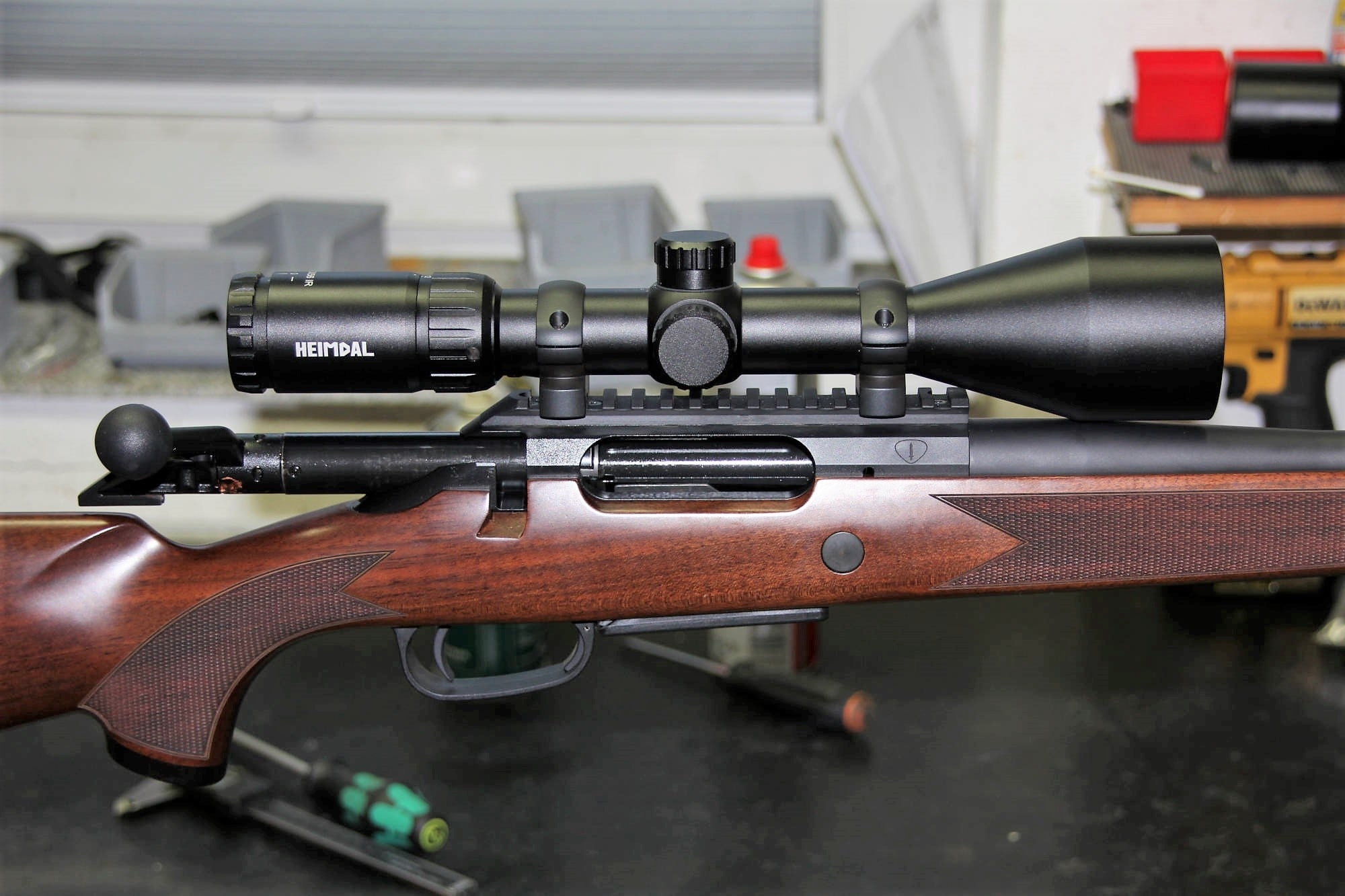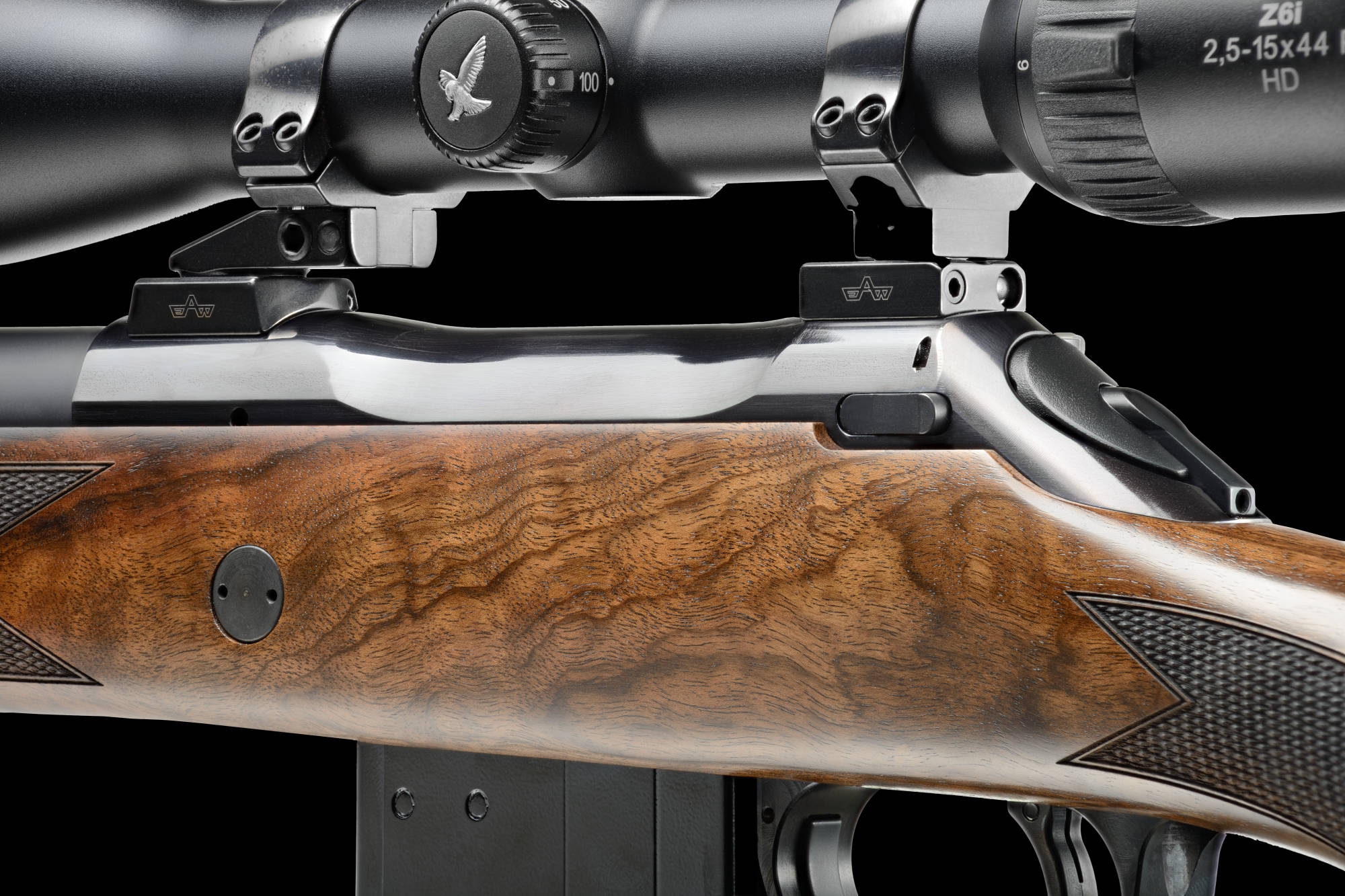The rifle core is a lavish and very neat aluminum chassis, featuring a 70-mm long steel guide and barrel clamping mechanism in the front. The barrel is attached to the receiver with four screws, which are tightened with a supplied torque wrench to achieve maximum stability and consistency. On the underside of the guide surface of the interchangeable barrels is a large groove which reliably prevents incorrect mounting. When changing caliber, bolt head must be replaced too, in addition to barrel and magazine. After removing the bolt from the receiver, simply move the safety lever at the rear to the safe position: the striker assembly can now be unscrewed and removed, after which the bolt head can be pushed out and removed, so that a replacement bolt head can be inserted.
No compromises with the TPG-3 magazine
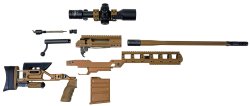
While other manufacturers work with only one magazine body and compensate the different cartridge lengths with inserts, Unique Alpine takes the uncompromising path and offers a separate magazine for each caliber. Even though the outer dimensions of the case magazines are identical, the inner guide surfaces have been accordingly adapted to each cartridge. Due to the successful design, which requires the tightest tolerances, a complete caliber change is completed within a few minutes with the Unique Alpine TPG-3 A4. The receiver featuring a perfectly flat bottom has a huge bedding area through which recoil and torsional forces are transferred to the light alloy chassis. Two voluminous bolts also ensure that the receiver always has a homogeneous interconnection with the chassis. In order to reduce stress and vibrations generated during firing to a minimum, not only are four springs located in front of the threaded heads of the receiver bolts, but a special vibration-reducing mat has been inserted between receiver and chassis. This design, as well as the two-stage trigger which can be adjusted from around 2.2 to 6.6 lb (1000 to 3000 g), is reminiscent of highly developed match rifles. Not only trigger pull and travel, but also the position of the trigger blade can be adjusted. A notch in the trigger center is intended to serve as an index point so that the trigger finger can be positioned consistently. In order not to increase the friction on the finger when shooting high performance calibers, however, no additional knurling was added – the TPG-3 A4 trigger blade is very wide and smooth.
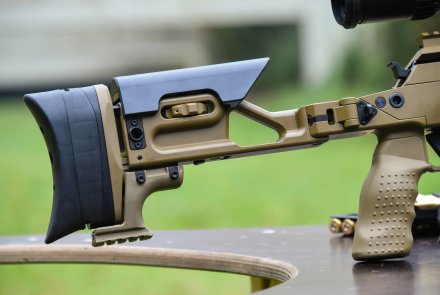
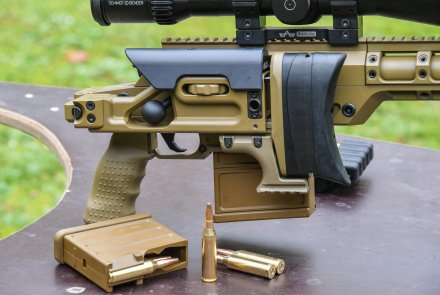
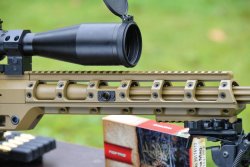
Unique Alpine TPG-3 A4 features
The rugged stock folding mechanism works absolutely free of play and all necessary individual adjustments to the stock can be made without tools. Length of pull can be finely adjusted by pressing a push button on the underside. Comb height, cast-on and cast-off can be comfortably and finely adjusted too. A monopod can be attached to a MIL-STD-1913 mounting rail on the stock bottom, providing additional flexibility with its three possible positions. The handguard surrounding the barrel can be upgraded with optionally available mounting rails in various lengths to allow equipment to be attached according to individual preferences.
.300 Norma Magnum – The best long-range cartridge?
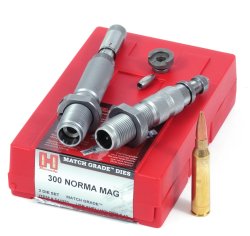
Until 2016, the .300 Norma Magnum, which was already CIP approved in 2012, was only for connoisseurs of the cartridge scene. But that changed abruptly when USSOCOM introduced the new cartridge for the "Advanced Sniper System". At least in the special forces, no expense and effort seems to be spared to keep up with the latest technology in terms of equipment. For long-range, in addition to a flat trajectory and reduced wind drift, the area where the bullet falls into the subsonic range is also important. And here the .300 Norma Magnum has a lot to offer. For example, Berger Bullets specifies a velocity of around 895 m/s from 26”/660 mm long barrels for the 230-grain Hybrid OTM Tactical cartridge. Together with the already astonishing BC value of 0.743 for a .30 caliber, the bullet only falls into the subsonic range at around 1700 meters. The .338 Lapua Magnum with a 300-grain bullet does the same, but trajectory is slightly more curved and recoil is stronger. Even at 1000 meters, the 230-grain Hybrid OTM Tactical bullet of the .300 Norma Magnum still travels at over 500 m/s.
By the way, the 2.51”/64 mm long case is based on the .338 Norma Magnum, which in turn is an offspring of the .416 Rigby. According to CIP rules, the "new Swede" cartridge may have a gas pressure of up to 4400 bar. In the diagram we compared the bullet drop of the .300 Norma Magnum with the .300 Winchester Magnum and .338 Lapua Magnum. In order not to compare the proverbial apples with oranges, we used Berger Bullets values as a basis. Berger also uses the 230-grain Hybrid OTM Tactical on the .300 Winchester Magnum, which was already released in 1963 and can reach 854 m/s. Besides Norma, only Hornady and Berger Bullets offer factory ammunition in the new, powerful caliber. However, the latter two do not have CIP approval. Reloading components are more readily available and the market for .30 caliber bullets in particular is well covered.
It remains to be seen how the new cartridge will establish itself in the long range scene or in military applications. New ammo is also a constant source of excitement for wildcatters, who create new cartridges by reshaping, shortening and reducing existing ones. This has already happened with the 7-300 Norma Improved, which is loaded with 7 mm bullets.
On the shooting range with the Unique Alpine TPG-3 A4 in .300 Norma Magnum and 6.5 Creedmoor calibers
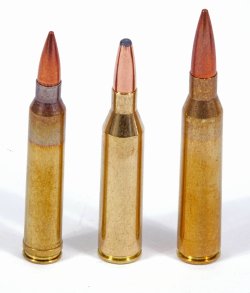
Already at 100 m the TPG-3 A4 showed that it's possible to punch small groups into the target. Here, the .300 Norma Magnum caliber also proved its potential. The heavy 190-grain and 200-grain bullets could be accelerated to 900 m/s without any problems. Despite the high V2, the groups were close together on the short range. All three cartridges produced groupings of around 0.78”/20 mm.
The tightest group was achieved with the 190-grain Sierra Match bullet. Here we needed 90 grains of Ramshot Magnum powder to punch a 0.47”/12 mm grouping into the target. The results were significantly different at 300 m. Here we achieved the best result with 1.77”/45 mm using Norma factory ammunition with the 200-grain Oryx bullet. It's a jacketed bullet that's on the market since 1996, with a particularly strong bond between the lead core and jacket. Unfortunately, we did not have any heavier .30" bullets available for the .300 Norma Magnum at the time of testing, as we could have easily used 230 to 240-grain bullet weights considering the 1-8" twist of the barrel of our test weapon.
In 6.5 Creedmoor, the 10-port muzzle brake of the TPG-3 A4 did a good job, because subjectively it felt like shooting a hard loaded .223 Remington. Of course, the heavy weight of the sniper rifle also played a decisive role. At 100 m, we achieved groupings below the 0.78”/20 mm mark with 6 out of 7 types of ammunition. With two loads we even fell below the 0.39”/10 mm mark. The smallest group of 0.31”/8 mm was produced with the Hornady Precision Hunter 143-grain ELD-X, closely followed with 0.35”/9 mm by our handload with 33.5 grains of Vihtavuori N150 and a Hornady 140-grain ELD match bullet. With 740 m/s this was a very slack load, but at 100 m it was quite sufficient. At 300 m these medium loads were of course at a disadvantage due to a lack of power. Here again the Hornady 143-grain Precision Hunter ELD-X hunting cartridge showed its performance – we shot the top result of 1.65”/42 mm with it, with 4 shots even inside a 1.06”/27 mm circle at 300 m! Due to the low, wintry temperatures during the long shooting session we couldn't avoid that a "flyer" sneaked in now and then.
Our test conclusion about the Unique Alpine TPG-3 A4
Unique Alpine's TPG-3 A4, which has been further developed on the basis of the previous TPG-1 and TPG-2 models as a result of the SOCOM PRS 1 tender, is an excellently manufactured, innovative multi-caliber sniper rifle that leaves nothing to be desired in terms of handling, adaptability and shooting performance.
However, so much quality has to be paid for – the sleek sniper rifle from Bavaria in one caliber costs around 8000 euro. But he who wants to drive a Ferrari, must also pay a Ferrari – car fans would say at this point. From our point of view there is nothing to add. Depending on the intended use and target ranges, the two new trendy calibers are a great addition for this proven model from Unique Alpine.
Further information about Unique Alpine rifles can be found on the Unique Alpine website.




